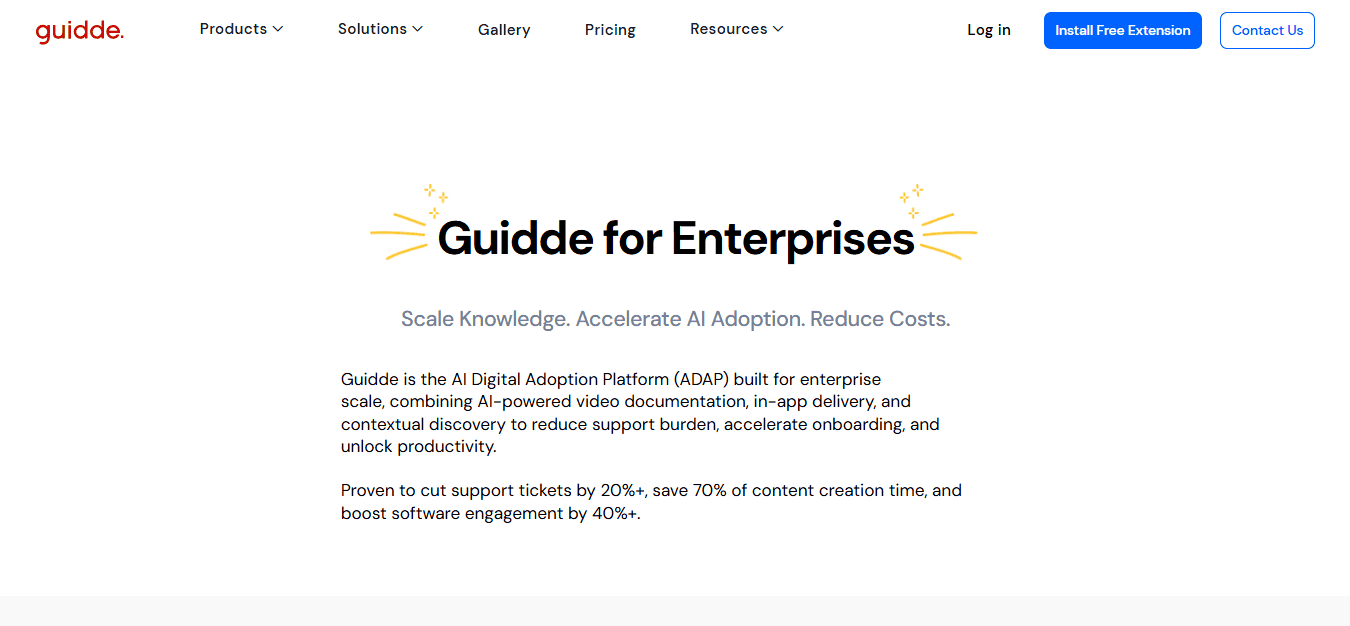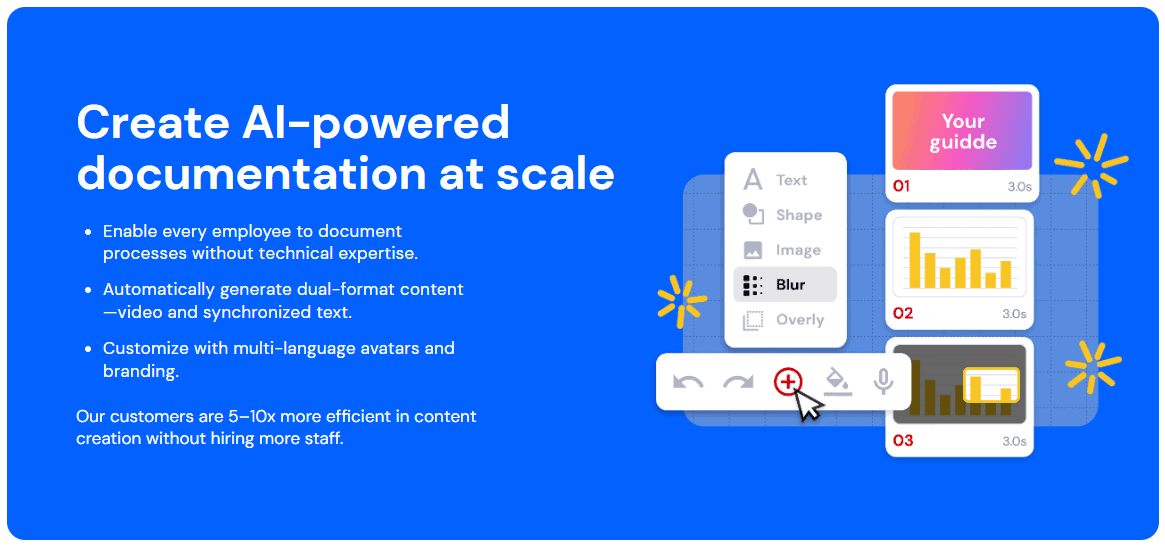Last Updated on November 19, 2025 by Ewen Finser
Is anyone still documenting workflows manually in 2025?
There are countless tools that can take the pain out of this tedious task nowadays. Of course, as is often the case in the world of B2B SaaS, this poses its own problem. There’s just too much choice.
Process Street is one of the leading workflow documentation apps out there at the moment, but it’s not the best pick for every organization. That’s why I want to look at some of its main competitors and make some recommendations that might be helpful for your business.
What Does Process Street Actually Do?
Process Street is a no-code workflow and process management tool. You can use it to document your team’s procedures and run them as checklists, standardizing their structure (and, ideally, their execution) for all team members.
Specifically, this includes tools that help with:
- Workflows: The tool’s central function is the creation of checklists to standardize common workflows. Essentially, you design your process once, then run it that way every time afterwards, using Process Street as your guide.
- Forms: You can use Process Street to build custom forms that integrate into your workflows automatically. This allows you to, for example, automate the implementation of client feedback in your processes, which is a handy time-saver when it works well.
- Pages: The platform includes a simple document editor for writing and sharing standard operating procedures (SOPs) and reference docs. It doesn’t offer anything you won’t get on Microsoft Word or Google Docs, but it does save you from using a separate app.
- Integrations and automations: Process Street supports Zapier and other integration platforms to trigger actions in external apps when steps are completed.
There’s a lot to like here. Process Street undoubtedly does a good job of tidying up messy SOPs, especially across larger teams. However, it’s far from perfect.
Perhaps most importantly, it’s too expensive. The company is a bit cloak-and-dagger when it comes to its subscription costs (it uses “custom pricing”, and doesn’t talk figures other than through its sales team). However, comments sections are full of complaints about the high prices charged for its Pro and Enterprise plans.
Speaking of plans, many of the platform’s most important features (particularly when it comes to support and security) are only available at the Enterprise level. Additionally, the free version is very limited (only five checklists and templates), so it’s difficult to get a proper insight into the practical utility of Process Street without spending money.
From an operational viewpoint, I also think the tool’s process documentation feels a little dated. There’s no automatic way to capture a process by just doing it; you have to write it up yourself. As we’ll see, this isn’t something you need to put up with in 2025.
Best Process Street Alternatives
Guidde
Using Guidde for the first time is a real “the-future-is-now” type of experience.
It’s an AI-powered, video-based process documentation tool that specializes in capturing how-to guides as you work. Instead of writing a procedure manually, you simply record your screen while you’re performing the process, and Guidde’s AI turns that recording into a step-by-step tutorial automatically.
This results in a drastic decrease in the effort required to document SOPs.
Check out our Full Guidde review here: My full Guidde review: Help with your documentation
Guidde puts it ALL together for me. I've used many screen recording tools (like Loom). I've used many SOP buiding tools (like Trainual). But Guidde puts the best of both together for a quick, easy to use mixed media documentation builder in one (less expensive) workflow. A small, but signficant (compounding) time saver in our business.
Pros of Guidde
- Ease of use: I found Guidde incredibly intuitive; install the browser extension, hit capture, and go.
- Highly customizable outputs: You can edit any step, text, or image after the fact, and customize the look of your guides (colors, logos, etc.) to fit your brand.
- Combination of video and text: Viewers can watch the video with voice-over and read the step-by-step instructions with screenshots. I’m personally a big fan of this mixed-media approach; it caters to different learning styles and really ensures you’re getting bang for your buck.
- Cost-effective for teams: Guidde is priced on a per-creator basis (creators are the team members who make guides) rather than per viewer. Its Business plan runs to $35 per creator/month (when billed annually) and supports up to 5 creator accounts. With Process Street, among other platforms, you’ll be billed for every user who might refer to the guides. Additionally, Guidde’s free tier is pretty robust and will give you a solid idea of whether the tool adds enough value to justify a monthly payment.
Cons of Guidde
- Imperfect AI: Occasionally, the automatic text or step breakdown will have minor errors or weird phrasing, so you’ll need to be diligent when it comes to proofreading.
- Limited support infrastructure: Guidde is a newer company, and its customer support is mostly provided via chat/email.
SweetProcess
SweetProcess is a traditional process management and SOP documentation platform. Like Process Street, it provides a centralized system to document, organize, and execute all your business processes. It also allows you to set up checklists to standardize these SOPs.
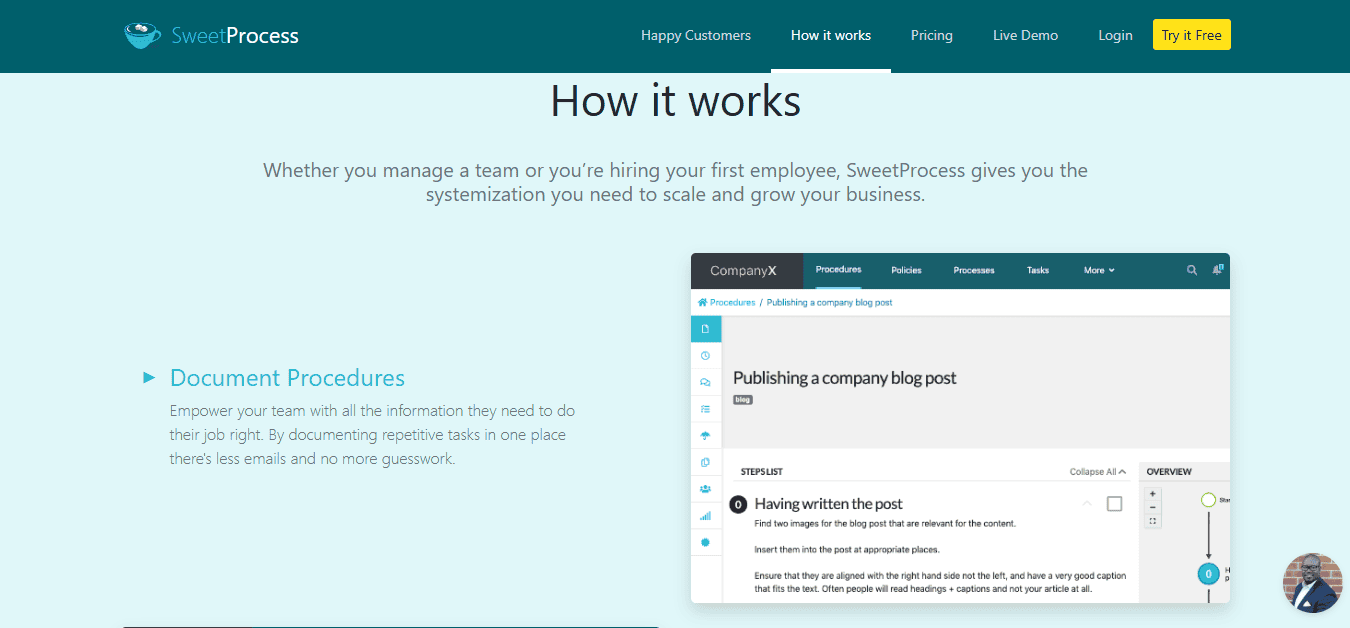
It’s a solid option that does the basics well, and its flat $99-per-month pricing structure for teams with 20 users or fewer makes it a great deal for teams with 15-20 people. However, it struggles with complex workflows and lacks the cutting-edge capabilities of certain competitors.
Pros of SweetProcess
- Comprehensive process management in one place: It documents SOPs, assigns tasks, tracks progress, and stores knowledge; everything process-centric teams need.
- Easy for the whole team to use: The interface is intuitive, the learning curve is gentle, and there’s value for team members at every level. I’m a particularly big fan of its visual process maps, which give you a birds-eye view of complex workflows; this is often more productive than a linear checklist, especially for senior managers.
- Real-time collaboration: Multiple people can co-edit a procedure. This is especially useful if several subject-matter experts need to weigh in on processes.

Cons of SweetProcess
- Cost for small orgs: Unlike most platforms in this space, Process Street works with flat (rather than per-user) pricing. If you only have a couple of users, the base price of $99/month might feel steep.
- Limited integrations and automation: Compared to something like Zapier or Kissflow, SweetProcess’s integration capabilities are a bit limited.
- Formatting limitations: Your options in terms of templates and formatting options are somewhat restricted.
- Not focused on conditional logic or complex workflows. SweetProcess is great at straightforward SOPs. But if you need conditional steps (“if X, do step A, otherwise do step B”) or parallel processes, it will struggle.
Trainual
Trainual takes a slightly different approach to SOPs. I’d describe it as “process documentation meets employee training.” It’s designed not just to document how work is done, but to train your team (and particularly your new hires) in those processes.
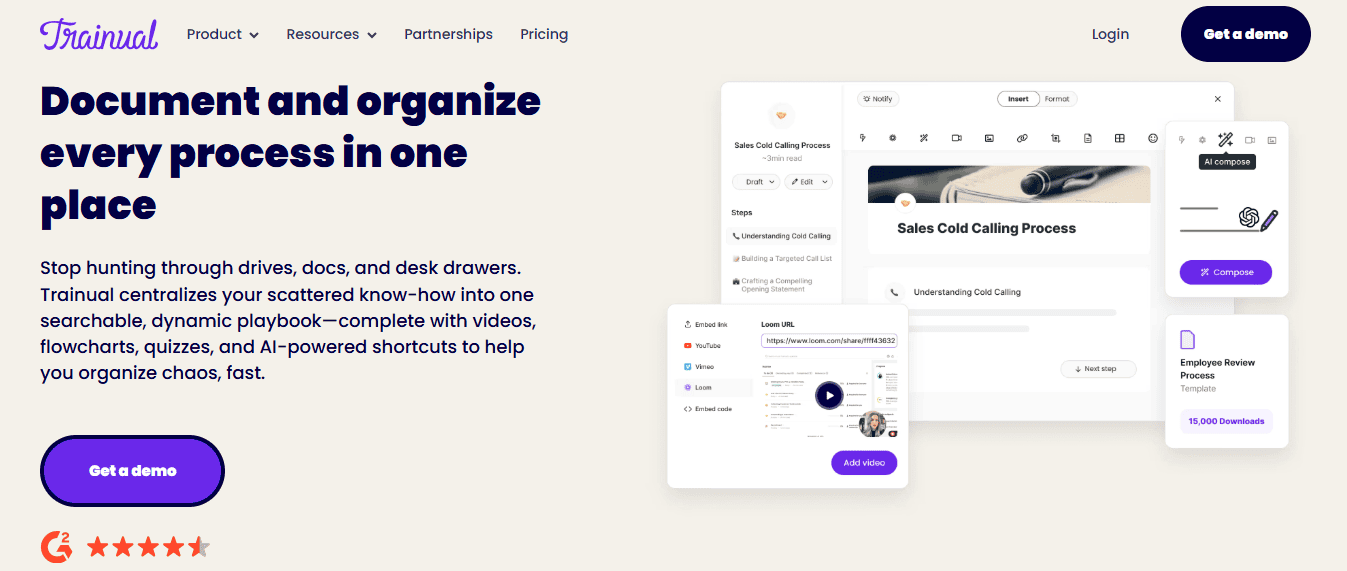
With Trainual, you create a centralized knowledge base of your company’s processes, policies, and tribal knowledge, and then you can assign training modules and assessments on the basis of this content.
Like Guidde, Trainual supports the embedding of training videos (although it doesn’t allow you to generate the videos in-app).
Output-wise, I really like Trainual. Unfortunately, its price is a major issue.
Also read: 9 Best Trainual Alternatives for Team Training and Onboarding
Pros of Trainual
- Focus on onboarding: Trainual feels like it’s purpose-built to get new hires up to speed quickly and ensure consistency in training across organizations. If onboarding is a pain point for you, Trainual may be worth a look.
- Multimedia content: As noted previously, I’m a big fan of the multimedia approach to process documentation. Trainual produces visually rich guides with videos, images, and even built-in screen recordings. This should help massively when it comes to engagement with the material.
- Assessment: I think the assessment features on Trainual could come in very handy, especially for large or compliance-focused teams. Plus, gamifying the task of learning SOPs makes it just a little bit more fun.
- Integration with communication tools: You can set up Trainual to provide reminders about module deadlines via Slack.

Cons of Trainual
- Price point: This is the elephant in the room. Trainual is one of the priciest tools in this space, and it’s overkill if you just need simple process checklists. Plans start at $249/month (for up to 10 users), and there’s no free tier or trial. This probably rules it out for most small businesses.
- Narrower focus: While it’s great for training and SOP storage, Trainual doesn’t help with daily execution of tasks or collaborative workflow automation. You may end up needing another task management tool alongside it.
- Time-consuming: I found that creating good Trainual content (writing modules, embedding videos, crafting quiz questions) took a fair amount of effort. It doesn’t automate content creation (though AI can help a bit now). If you have dozens of processes to document, the initial setup is a project in itself.
- Overkill for simply documenting processes. Trainual’s real strength is in teaching processes, rather than just documenting them for reference.
Monday.com
If you’re seeking a more general work management platform that can handle process documentation, you’re probably looking for Monday.com. It’s essentially a customizable spreadsheet on steroids that can be adapted to a plethora of project management use cases, including the documentation of SOPs.

It has a robust arsenal of automations and integrations, and offers a lot of assistance with collaboration as well. However, if you plan on using it mainly for process documentation, you might be better off with one of the more specialized applications on this list. Because Monday.com isn’t designed specifically with SOPs in mind, you’ll need to use more customization to get where you need to go. This isn’t a dedicated process tool out of the box; you’ll need to configure the boards and automations to fit your requirements.
Pros of Monday.com
- Highly versatile and customizable. Monday’s versatility is great if you want one tool to execute various types of project management functions.
- Visualization options: You can organize tasks using Kanban boards, Gantt timelines, calendars, or forms – whatever makes the most sense for your team.
- Collaboration features: As a general-purpose project management platform, Monday.com does a better job of enabling collaboration than some of the other alternatives listed here.
- Integrations and automations: This is another area in which Monday does really well. If you’re a fan of integrations, it’s definitely worth a look.
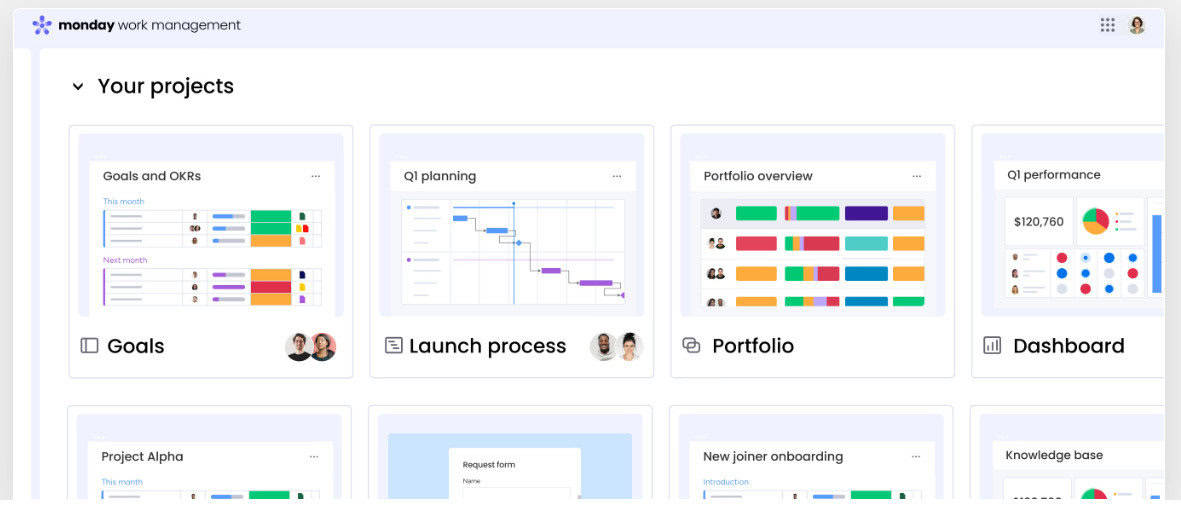
Cons of Monday.com
- Overkill for simple needs: If all you want is a checklist tool for recurring tasks, Monday will feel too heavy, especially when it comes to the initial setup.
- Cost scales with users and features. Monday’s base plans are affordable (starting at $8 per user/month), but the costs start to stack up as you add users or extend automation limits.
- Not purpose-built for SOP documentation. There’s no native concept of an “SOP document” in Monday. You’ll need to store procedural text in long-text columns or attached Google Docs. It’s workable, but not as neat as a dedicated SOP tool. If you’re mainly in need of something to log your SOPs, I’d recommend looking elsewhere.
Finding the Tool That Works for You
Process Street is a decent platform, but it’s not the only game in town (especially if you’re on a budget).
For me, Guidde is the best workflow tool out there for the average company. I think video is the future in this space, and Guidde makes high-quality process recording effortless. Now is the time to get in on the ground floor, because this type of tech is only going to get better.
If you run a larger operation with heavy onboarding or training needs, Trainual might be worth the investment. The trade-off is cost – it’s only worth it if you truly need those training features. If an all-in-one platform is your top priority, Monday.com is probably the way to go.


